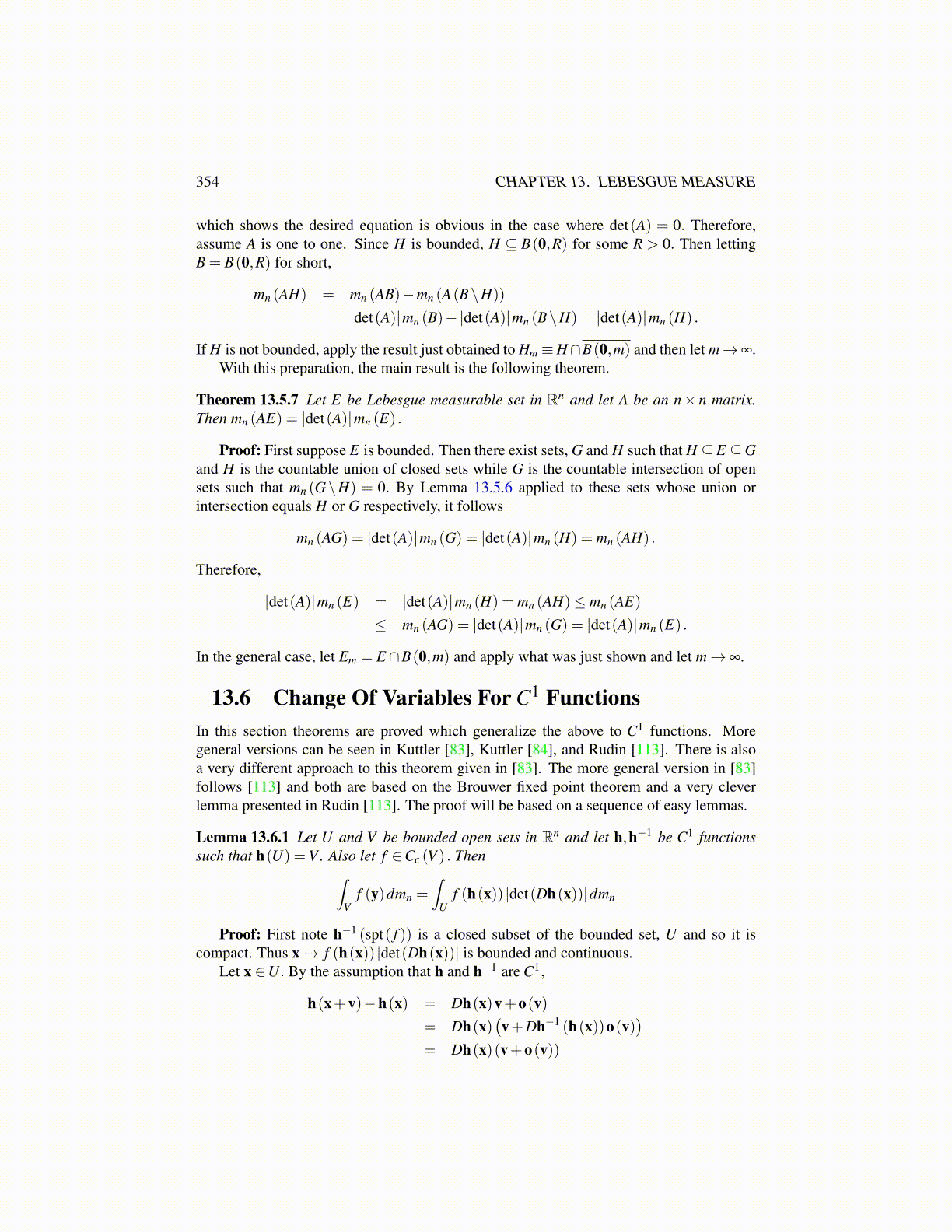
354 CHAPTER 13. LEBESGUE MEASURE
which shows the desired equation is obvious in the case where det(A) = 0. Therefore,assume A is one to one. Since H is bounded, H ⊆ B(0,R) for some R > 0. Then lettingB = B(0,R) for short,
mn (AH) = mn (AB)−mn (A(B\H))
= |det(A)|mn (B)−|det(A)|mn (B\H) = |det(A)|mn (H) .
If H is not bounded, apply the result just obtained to Hm ≡H∩B(0,m) and then let m→∞.With this preparation, the main result is the following theorem.
Theorem 13.5.7 Let E be Lebesgue measurable set in Rn and let A be an n× n matrix.Then mn (AE) = |det(A)|mn (E) .
Proof: First suppose E is bounded. Then there exist sets, G and H such that H ⊆ E ⊆Gand H is the countable union of closed sets while G is the countable intersection of opensets such that mn (G\H) = 0. By Lemma 13.5.6 applied to these sets whose union orintersection equals H or G respectively, it follows
mn (AG) = |det(A)|mn (G) = |det(A)|mn (H) = mn (AH) .
Therefore,
|det(A)|mn (E) = |det(A)|mn (H) = mn (AH)≤ mn (AE)
≤ mn (AG) = |det(A)|mn (G) = |det(A)|mn (E) .
In the general case, let Em = E ∩B(0,m) and apply what was just shown and let m→ ∞.
13.6 Change Of Variables For C1 FunctionsIn this section theorems are proved which generalize the above to C1 functions. Moregeneral versions can be seen in Kuttler [83], Kuttler [84], and Rudin [113]. There is alsoa very different approach to this theorem given in [83]. The more general version in [83]follows [113] and both are based on the Brouwer fixed point theorem and a very cleverlemma presented in Rudin [113]. The proof will be based on a sequence of easy lemmas.
Lemma 13.6.1 Let U and V be bounded open sets in Rn and let h,h−1 be C1 functionssuch that h(U) =V . Also let f ∈Cc (V ) . Then∫
Vf (y)dmn =
∫U
f (h(x)) |det(Dh(x))|dmn
Proof: First note h−1 (spt( f )) is a closed subset of the bounded set, U and so it iscompact. Thus x→ f (h(x)) |det(Dh(x))| is bounded and continuous.
Let x ∈U. By the assumption that h and h−1 are C1,
h(x+v)−h(x) = Dh(x)v+o(v)= Dh(x)
(v+Dh−1 (h(x))o(v)
)= Dh(x)(v+o(v))